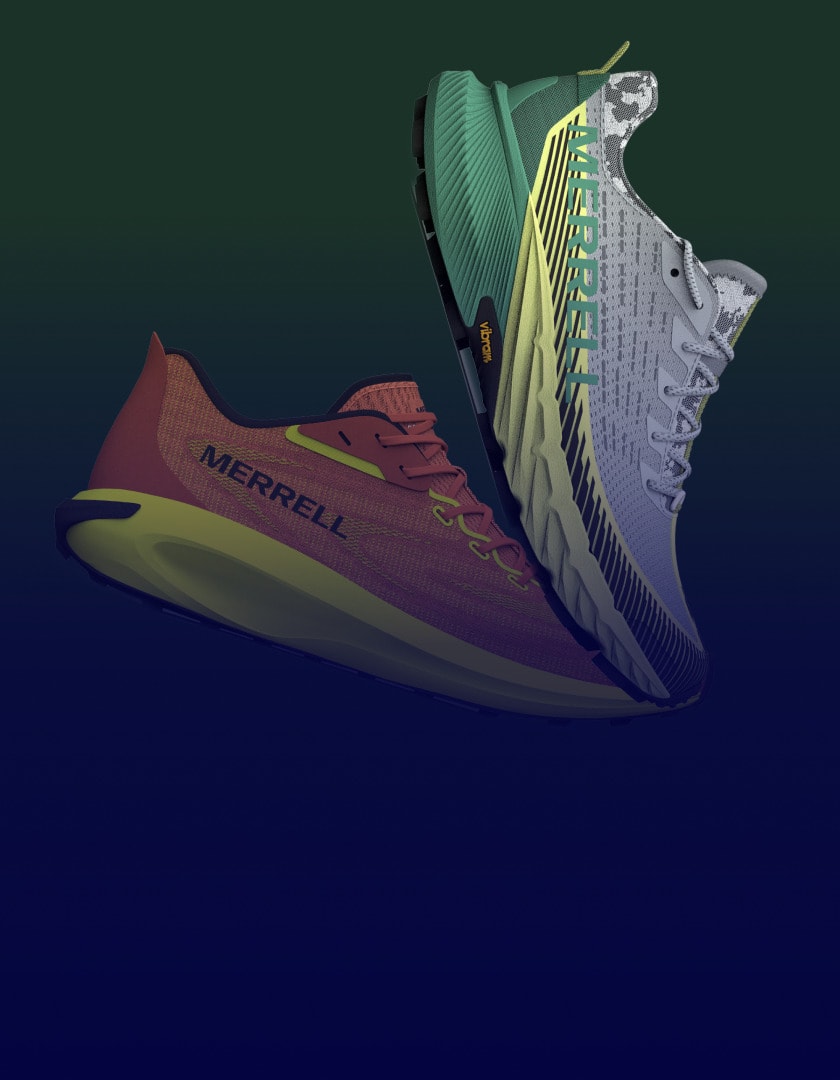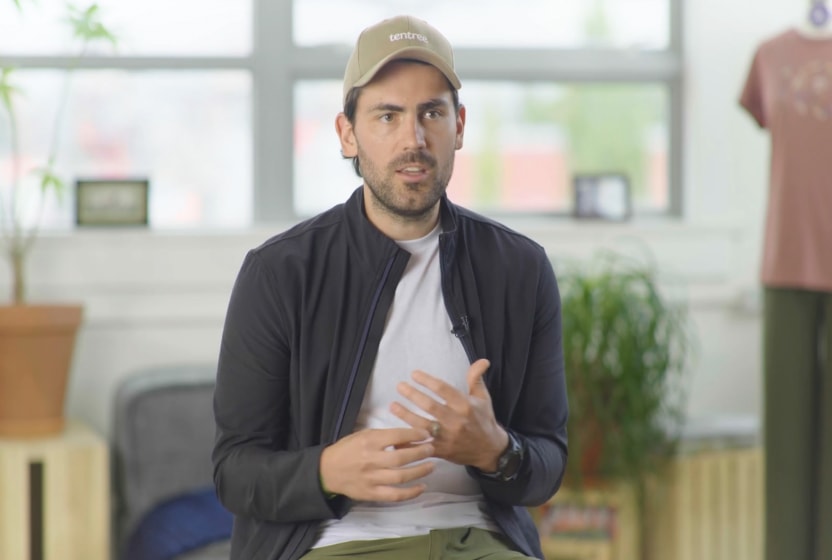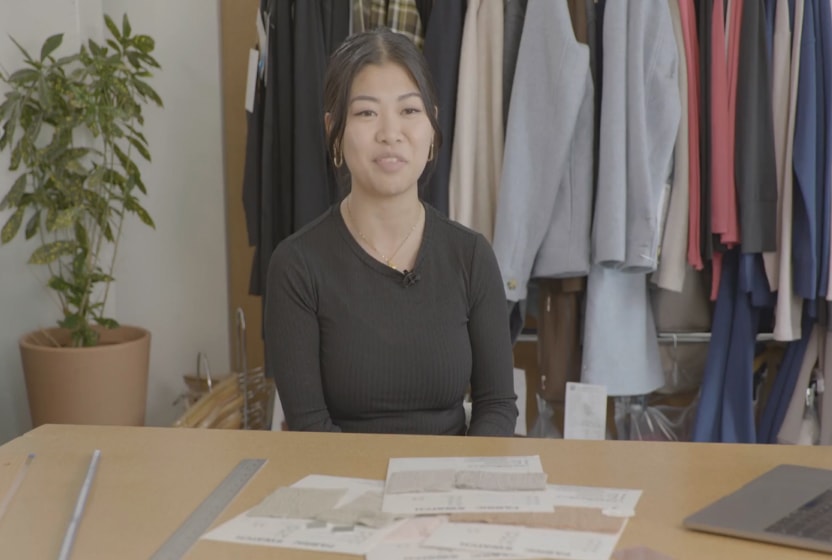The Rapid Rise of tentree
“Since 2015, our team has tripled in size. In just five years, we moved from printing a few t-shirts to more than 500,000 annually. As a result, the tools we were originally using to manage our internal processes—spreadsheets and emails—very quickly became unsuitable when we needed to scale production.”
Derrick Emsley, tentree CEO, discusses the conditions surrounding the company’s rapid rise. “The pace of growth has been exciting, but it’s also been a challenge in terms of volume alone.” Today, tentree designs and develops more styles every season. Its products are sold across North America through retail partners, wholesalers and the company’s own e-commerce channel—with growing interest from retailers in Australia and Europe. What path did they travel to get to this point?
10 Trees for Every Item
Founded in 2012, tentree is relentlessly building a new kind of environmentally conscious apparel business from its headquarters in Vancouver, Canada. Emsley says, “We believe that big change starts small. Trees are why we exist as a business. We don’t think of ourselves as an apparel company that happens to plant trees. We think of ourselves as a tree-planting company that happens to sell apparel.”

Guided by three principles—stewardship, transparency and community—tentree carefully targets locales that will benefit the most from its tree-planting efforts. Customers can track where the trees associated with their specific item(s) purchased are taking root using a unique code.
But while sustainability comes first for tentree, product is anything but an afterthought. The company creates high-quality apparel and accessories that encourage people to venture outdoors and engage with their environment.
New Technology for New Growth
With 10 trees planted for every product sold, the tentree message has resonated with consumers to the tune of millions of trees planted to date. The goal is to plant one billion trees by 2030.
As tentree’s SKU count grew, the old methods of production tracking began to hinder the company’s ability to scale without compromising core values. To manage the mounting volume of new product introductions, a yearly influx of new staff, and to better track design, development and production, tentree needed new technologies.
Environmental, social and governance (ESG) factors are taken seriously. “We are dedicated to socially responsible manufacturing, but having so many different, disconnected forms of communication was making it difficult to get the level of internal accountability,” says Emsley. “One of the biggest challenges we face is traceability throughout our entire supply chain. Chain of custody is a huge challenge, particularly in sustainable materials where you’re making claims about where this product was sourced, how that organic cotton was actually farmed, and the ability to track and trace that through each individual product. We’re only capable of doing that through technology.” Supply chain transparency software is one way of ensuring visibility from concept to store shelves.
Centric Steps Up To the Plate
After some investigation, tentree found that the brands they admired were doing product development in PLM instead of using spreadsheets, manual data entry and emails. However, the traditional licensing model favored by many software vendors was prohibitively expensive for a business as small and fast-moving as tentree. “To sustain our growth, keeping cash within the organization is absolutely critical,” says Emsley. “We didn’t want to have to buy a server or employ an internal team to support PLM.”

The perfect solution was a subscription to Centric PLM™ —a cloud- based solution specifically tailored for small to medium-sized businesses. “There were other subscription models out there, but none of them could match the capabilities, usability and scalability of Centric PLM,” says Emsley.
For tentree, factors other than cost played into the decision. “We’re a young business made up of people from a young generation, so we live on the internet,” explains Creative Director Arthur Kononuk. “We needed a solution that was accessible from anywhere, at all times and adaptable enough to grow as we are. Centric PLM is affordable and has everything we need out of the box, and the suite of additional modules makes it scalable as our needs evolve. We wanted to lay the foundation to help us grow—not just for the next two years, but for the next five or 10.”
Design Environment
Lisa Lai, Associate Designer of Accessories and Knitwear, describes how manual tentree’s processes were prior to Centric. “In making tech packs, we would have to put our Illustrator files into an Excel spreadsheet through screenshots. Points of measure were manually entered. The size charts and grading system were all through these spreadsheets. And since we were sending Microsoft documents to the factory, there was always room for error.” “
As a designer, it’s been huge to eliminate these manual steps,” Lai says. “It allows a lot more time for creativity and what we’re good at. So, we can sketch and be creative that way. In one of our design processes—coloring up the line—we need to see what SKUs are what color. Before Centric, we actually had to print out Illustrator files and manually count all the different colors. Now you can just filter within that season. Something that might have taken hours is cut down to 10 to 20 minutes of work!”
Any technology system must be embraced by the users, or it doesn’t serve its purpose. “Having such a user-friendly interface really speeds up the onboarding process, making it very easy for new people to learn the software,” says Kononuk.
And beyond the abstract of improved user satisfaction, the intuitive, collaborative nature of Centric PLM has also delivered more concrete results. “Prior to PLM, a single team member would have to manually update a cumbersome master sheet with any changes to our lines,” says Kononuk. “But now, a designer working in Illustrator can push a style to PLM, and our merchandising and line management teams will receive it instantly for review. That process used to take up to two days, but by collaborating in Centric PLM, we can manage the same updates in an hour and have our line sheets exported and ready to go.”
Driving Efficiency and Sustainability
Ludovic Duran, Product Commercialization Director, describes the state of having siloed systems. “Your information tends to be located in different software platforms, and so, centralizing it is the starting point. From there, you can add other tools, attach sustainability functions to your central database and have everything in one place.”
“Key environmental partners like bluesign, the Higg index and Textile Exchange add value for a player who has no idea what the world of sustainable apparel is. When you embark on that journey, there is information overload. It can be paralyzing to figure out what the next step is. Having the workflow as part of the Centric offering is a competitive advantage. It will appeal to some of those companies because they don’t have to research outside the platform—they can see what they need to do next.” This is the fast track to attaining sustainable in fashion.
We’re actually able to map out our supply chain and understand in depth how we are taking those initial steps and where we’re close to achieving sustainability.
“And now, we’re using systems like Centric PLM to allow us to source quicker, create products more rapidly and get them to market quicker. Ultimately for us, that leads to planting more trees.”
“Businesses are transforming how they think about sustainability and the role they play in climate change,” adds Emsley. “In addition to that, we’re going to focus on restoring the planet through the products we’re selling as well.”
Duran says, “We want to look at how can we evolve the solution to be the best out there. I think that because of that approach, there’s an opportunity for us to continue to work together and for Centric to become the leader in sustainable PLM.”

Results Speak
tentree intentionally reduced the number of styles by 20-30% to focus on depth rather than breadth, strengthened relationships with key partners working to produce sustainable and biodegradable materials, and increased its number of categories from 15 to 20, adding accessories such as wallets, backpacks and water bottles.
Centric PLM’s intuitive, visually geared interface saves time and has become essential for ensuring the integrity of tentree’s styles and optimizing the brand’s speed to market.
Lai says, “Before, there were many essential manual tasks and it was such a shame when creative minds want to be sketching or coloring but had to deal with those tedious items. Now, those steps are quick, allowing time for creativity. We definitely cannot live without Centric at tentree.”
New to Centric PLM? Learn more
What is Centric Pricing & Inventory? Learn more
What is Centric Market Intelligence? Learn more
Centric Visual Boards Learn more




















